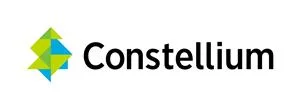
NASA’s Artemis Mission: How Constellium’s Aluminum is Fueling the Return to the Moon
NASA is setting its sights back on the moon with the ambitious Artemis program, and a key player in this endeavor is Constellium, a global leader in aluminum products. Recently, NASA representatives visited Constellium's Ravenswood, West Virginia facility to express their gratitude and underscore the critical role the company plays in making the lunar mission a reality.
The Artemis program aims to not only return astronauts to the Moon by 2027 but also to establish a sustainable presence that will pave the way for future missions to Mars. Constellium's advanced aluminum sheet metal is being utilized for the Space Launch System (SLS) Rocket and the Orion spacecraft, both essential components of the Artemis program.

John Honeycutt, the SLS Program Manager, emphasized the importance of Constellium, stating, "When you have a place like Constellium that builds these basically large structural components... It’s because it’s the backbone of the rocket. They take great care to meet our requirements and do the inspections that we require to show that the material is flawless, and it will be performed as designed and processed."
Constellium's contribution extends beyond simply supplying materials. Their Airware® aluminum-lithium alloy, developed and produced exclusively by the company, offers a unique combination of low density and high strength, making it ideal for the extreme conditions of spaceflight. This advanced material is crucial for withstanding the rigors of liftoff and reentry, ensuring the safety and success of the mission.
During NASA's visit, Senior Astronaut Douglas Wheelock addressed the Constellium workforce, expressing gratitude for their dedication and attention to detail: "We’re here to tell the workforce here in Ravenswood that their the impact that they have on us is extraordinary and we’re really, really grateful for their attention to detail and their safety and the passion that they put into their work here at Constellium."
The visit also included a presentation on the five phases of Project Artemis, offering workers a clearer understanding of how their efforts contribute to the overall mission. According to Tyler Nester, the Senior Advisor for Production for the Moon to Mars Program, NASA aims to have astronauts back on the Moon in 2027.
Brian McCallie, the Vice President of Constellium Ravenswood, reflected on the event, stating: "I think there’s an overwhelming sense of pride in the plant today... But I think having visitors here in such important positions to talk about what we mean to them is a real boost in the arm, and it kind of makes you realize and take a step back of what we’re doing here. It’s pretty amazing stuff."
Constellium's involvement in Project Artemis not only supports NASA's deep space ambitions but also reinforces American leadership in advanced manufacturing and materials science. The program serves as an inspiration for future generations of scientists, engineers, and explorers.
What advancements in materials science do you think will be most crucial for deep space exploration in the coming years? Share your thoughts and predictions in the comments below!